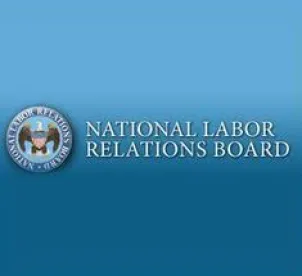Swinging the pendulum back to imposing a higher hurdle for employers seeking to include employees improperly excluded from a proposed bargaining unit, the National Labor Relations Board (NLRB) in American Steel, 372 NLRB 23 (2022), has returned to the “overwhelming community-of-interest” standard set forth in Specialty Healthcare, 357 NLRB 934 (2011), for determining an appropriate bargaining unit in union representation cases. The new standard generally allows unions to “cherry pick” job classifications to organize.
Trump-Era Standard
In PCC Structurals, Inc., 365 NLRB No. 160 (2017), the NLRB overruled Specialty Healthcare, which had made it easier for unions to organize “micro-units.” The Board returned to its prior analysis for assessing “whether a proposed bargaining unit constitutes an appropriate unit for collective bargaining when the employer contends that the smallest appropriate unit must include additional employees.” Under PCC Structurals, the Board no longer shifted the burden to employers to establish excluded employees share such an “overwhelming community of interest” with petitioned-for employees that there is “no legitimate basis upon which to exclude [them] from” the petitioned-for unit because the traditional community-of-interest factors “overlap almost completely.”
The Board therefore did not carve out a “micro-unit” unless it found petitioned-for employees “share a community of interest sufficiently distinct from the interests of employees excluded from the petitioned-for group to warrant a finding that the proposed group constituted a separate appropriate unit.”
Background
In American Steel, the union filed a petition to represent ironworkers at the organization. The employer asserted the petitioned unit inappropriately excluded certain other employees who worked at the shop. Using the PCC Structurals standard, a Board regional director found the petitioned-for unit was not appropriate because the evidence was insufficient to show that fieldworkers “possess[ed] a community of interest that is ‘sufficiently distinct’ from the [e]mployer’s remaining employees.” The union did not want to proceed with the election and the regional director dismissed the petition.
Following a Request for Review, the NLRB issued a notice calling for parties to file briefs as to whether it should keep the PCC Structurals standard or revert to Specialty Healthcare.
New Standard
The NLRB returned to the heightened standard for employers to show that excluded employees belong in the unit. The Board also shifted the burden back on the employer contesting the proposed unit.
Accordingly, if a union petitions for an election among a particular group of employees, and the employer takes the position that the smallest appropriate unit should include employees excluded from the proposed unit, the Board will not find the petitioned-for unit inappropriate unless the employer proves the excluded employees share an “overwhelming” community of interest with the petitioned-for group.
The new standard, therefore, requires unions to show the petitioned-for units are “readily identifiable as a group,” have a “community of interest” with others in the proposed unit, and are “sufficiently distinct.” If an employer contests the petitioned-for unit for excluding certain employees, it will have the burden of demonstrating the excluded employees have an “overwhelming community of interest” with the proposed unit that requires their inclusion.
As a result, unions will have a greater advantage in elections by carving out smaller, artificial groups to exclude employees or groups of employees who are inclined to vote against union representation.
Implications
The Board’s decision applies retroactively to all pending cases. Based on the lower standard imposed on bargaining units, it likely will be easier for smaller groups of workers within an organization to unionize. Consequently, employers making year-end plans may want to conduct a bargaining unit analysis to determine whether there are opportunities to reinforce facts and practices that will enhance arguments supporting more favorable bargaining unit configurations.





 />i
/>i
